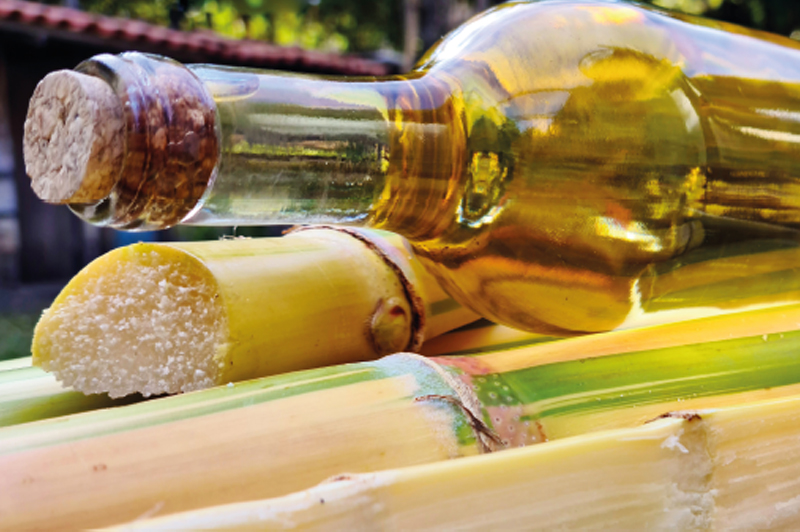
Traditional rum and agricultural rum are not the only spirits made from sugarcane; there is also Cachaça,* which is one of the most popular liquors in the world.
Cachaça is the emblematic alcoholic beverage from Brazil: its history goes back to the colonization of Brazil by the Portuguese. They say it is the oldest drink distilled in the Americas as it was first made between 1516 and 1532, long before Pisco, Tequila, or Rum.
Exclusively produced from fermented sugarcane juice, Cachaça is distilled in pot still or column stills, with an alcohol content between 38° and 48° (generally 40°). So, are you sure we aren’t talking about agricultural rum?

The difference between these two spirits is found primarily in the distilling process: agricultural rum is distilled at around 70° then reduced with water to obtain a finished product at 50°; Cachaça, is distilled between 38° and 48°, then bottled immediately. Another difference is that Cachaça can only be produced in Brazil, primarily in four geographic zones: São Paulo, Rio de Janeiro, Minas Gerais, and the Northeast (Bahia, Pernambuco and Ceará). The Northeast produces industrial Cachaça called “de coluna,” (from the use of column stills), while the best artisanal Cachaças, made as in the 16th century in pot stills, come primarily from the Brazilian states of Rio de Janeiro and Minas Gerais, a state larger than metropolitan France and located north of Rio de Janeiro. Coexisting in Brazil, there are no fewer than 1,500 industrial producers for 5,000 brands, to which one must add 15,000 small artisanal producers.
We mostly are familiar with the transparent Cachaça that has a fairly neutral taste, but like rum, Cachaça can be aged in wooden barrels. Brazil uses more than 30 essences from different kinds of wood—ambula, ipe, eucalyptus, chestnut, oak…—which add a large variety of colors, aromas, and flavors to the Cachaça.
A Caipirinha is to Cachaça what the Ti-punch is to agricultural rum. Basically, both of these iconic cocktails contain the same ingredients: Cachaça (in the place of agricultural rum), lime, and sugarcane. Thanks to the success of this drink, Cachaça is one of the world’s best-selling spirits. While there are 1.5 billion liters of Cachaça distilled in Brazil per year, only 1% of the production is exported.
*The abuse of alcohol can harm your health, consume in moderation.
Auteur : Victoria Payen-Pothier

